Safe summer booklet to read and color.
Download your freebie here!

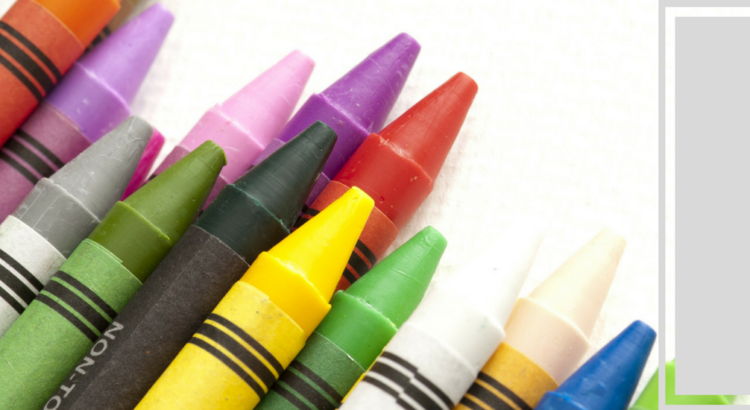
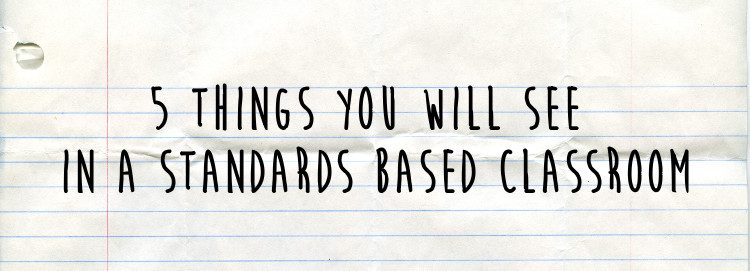
I’ve been seeing these t-shirts on Pinterest that say “I teach children, not standards!”. While I think I know what they mean by this; we also need to remember that it is a GOOD thing to teach the standards. The standards are, after all, nothing more than a list of things that kids need to know and be able to do. My t-shirt will say, “I teach children all of the standards so they can be successful in school and in life”. Ok, I might need to work on that. Below are some things I have been working on to make my classroom standards-based.
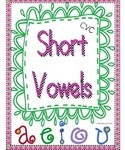
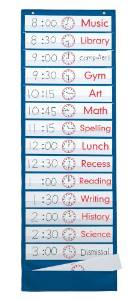 I bought the kid-friendly standards from Deanna Jump on TPT. I bought the pocket chart on Amazon.
I bought the kid-friendly standards from Deanna Jump on TPT. I bought the pocket chart on Amazon.I would love to know what you’re doing in YOUR standards-based classroom. Please share in the comments!
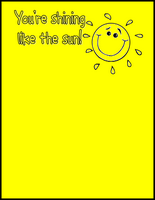
I use these “Sunshine Notes” as a way to provide positive feedback to parents about their child. Many years ago a paper company donated boxes of bright yellow paper to my school and that is what inspired me to use the “sunshine” theme. I have continued to print the notes on yellow paper for the past 20 years.
They are quick and easy to use. I print a stack of them ahead of time and clip them to a small clipboard along with a list of my students’ names. When I catch someone doing something good; I write a quick note, drop it in the folder box to go home and check off their name on the list. That is how I make sure I don’t inadvertently skip someone. It only takes a moment and it increases the positive communication with parents.
Click below to download a free printable template for my Sunshine Notes. Enjoy!
 You care. You know you do but they don’t. So tell them, show them, talk about it with them. Remind them that you are on the same team. Eliminate an “us” against “them” feeling. Let them know you are working “with” them for their child. Explain to them that your goal is to help their child. It’s true and parents like to hear it.
You care. You know you do but they don’t. So tell them, show them, talk about it with them. Remind them that you are on the same team. Eliminate an “us” against “them” feeling. Let them know you are working “with” them for their child. Explain to them that your goal is to help their child. It’s true and parents like to hear it. It’s easy to fall into the teacher trap of trying to “fix” everything that is not working correctly. But what about the things that are going great? Make a point of letting parents know what their kids are doing well. If the best thing you can say is “Johnny remembers to hang up his bookbag everyday without a reminder.” then say it. Now that you’re looking for positives; make sure you have a system in place to manage them. I keep a little clipboard with small preprinted “Sunshine Notes” on it. A student list is taped to the back of the clipboard. When I see a child doing something kind, or working especially hard, etc. I jot a quick “Johnny helped a friend during math today!” onto a Sunshine Note, check off Johnny’s name on the list, and drop it into the folder box to go home with Johnny. It only takes a second and I can use my checklist to make sure I don’t inadvertently overlook someone. (I will post my Sunshine Notes as a freebie soon).
It’s easy to fall into the teacher trap of trying to “fix” everything that is not working correctly. But what about the things that are going great? Make a point of letting parents know what their kids are doing well. If the best thing you can say is “Johnny remembers to hang up his bookbag everyday without a reminder.” then say it. Now that you’re looking for positives; make sure you have a system in place to manage them. I keep a little clipboard with small preprinted “Sunshine Notes” on it. A student list is taped to the back of the clipboard. When I see a child doing something kind, or working especially hard, etc. I jot a quick “Johnny helped a friend during math today!” onto a Sunshine Note, check off Johnny’s name on the list, and drop it into the folder box to go home with Johnny. It only takes a second and I can use my checklist to make sure I don’t inadvertently overlook someone. (I will post my Sunshine Notes as a freebie soon). Whether your newsletter is a full page of detailed information or like mine, a half page full of bullet points and quick notes, you can use it as a way to make parents feel valued. I always put a thank you in the notes/reminders section of my newsletter. “Thanks to Johnny’s mom for sending cupcakes for the Valentine’s party.” “Thanks to Susie’s mom for sending us some Kleenex for our classroom.” Not only do Johnny and Susie’s moms feel valued for their contribution but a bonus is that other moms will often jump on the bandwagon and the Kleenex and germ-x will flow into your room. Win-win for everyone.
Whether your newsletter is a full page of detailed information or like mine, a half page full of bullet points and quick notes, you can use it as a way to make parents feel valued. I always put a thank you in the notes/reminders section of my newsletter. “Thanks to Johnny’s mom for sending cupcakes for the Valentine’s party.” “Thanks to Susie’s mom for sending us some Kleenex for our classroom.” Not only do Johnny and Susie’s moms feel valued for their contribution but a bonus is that other moms will often jump on the bandwagon and the Kleenex and germ-x will flow into your room. Win-win for everyone. The more parents hear from you, the more vested they become in what’s going on in your classroom. I’m not talking about bombarding them with typed and copied notes in the folders. I’m talking about sincere communication and it doesn’t have to be too time consuming. Remember you can: email, text, write a note in a folder/agenda, call, catch them in the car rider line, or invite them in for a conference. Do what you are comfortable with but do it often. Little things can mean a lot. If you have already shown a parent that you care about their child, you like their child, you have noticed positive things about their child and you appreciate them as parents; then they will be more receptive if the need arises to have a difficult talk with them about their child’s behavior or learning. Together you will be able to work with them to find a resolution to the problem because you have already created the feeling that you are a team working together for their child.
The more parents hear from you, the more vested they become in what’s going on in your classroom. I’m not talking about bombarding them with typed and copied notes in the folders. I’m talking about sincere communication and it doesn’t have to be too time consuming. Remember you can: email, text, write a note in a folder/agenda, call, catch them in the car rider line, or invite them in for a conference. Do what you are comfortable with but do it often. Little things can mean a lot. If you have already shown a parent that you care about their child, you like their child, you have noticed positive things about their child and you appreciate them as parents; then they will be more receptive if the need arises to have a difficult talk with them about their child’s behavior or learning. Together you will be able to work with them to find a resolution to the problem because you have already created the feeling that you are a team working together for their child.
Creating a standards-based classroom is hard work! Thank goodness, I’m not on my own. Meet my team of helpers.
This is Scooter, we collaborate, we share ideas. Here she is selecting clip art for a project.
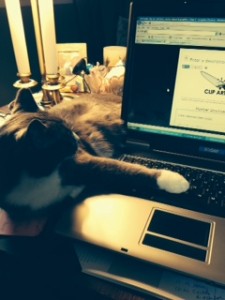



Meanwhile, Lucky makes sure that my computer bag is nice and warm in case I should need it.

I’m fortunate to have such a great creative team. I hope I haven’t made anyone jealous with my riches of blessings.
I’ll leave you with a look at my summer reading list.

Gotta go. I have work to do and my helpers are waiting.